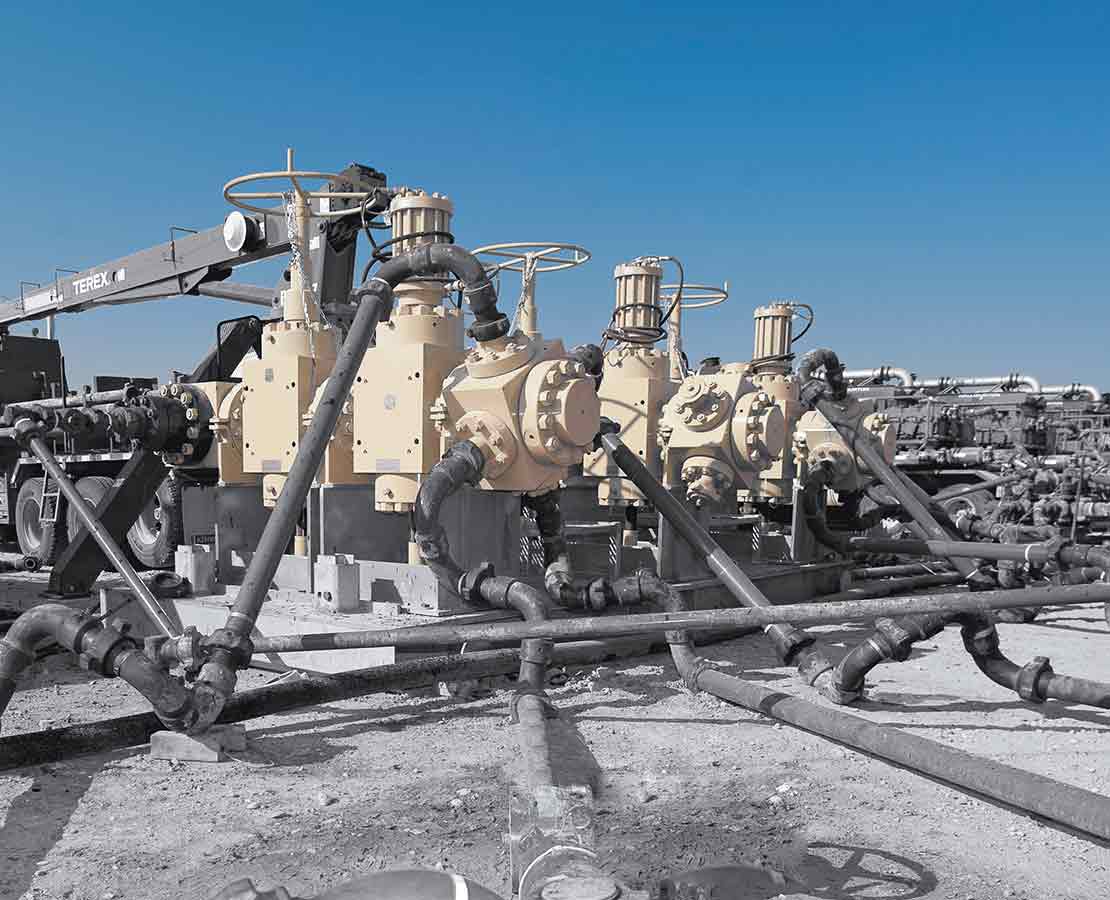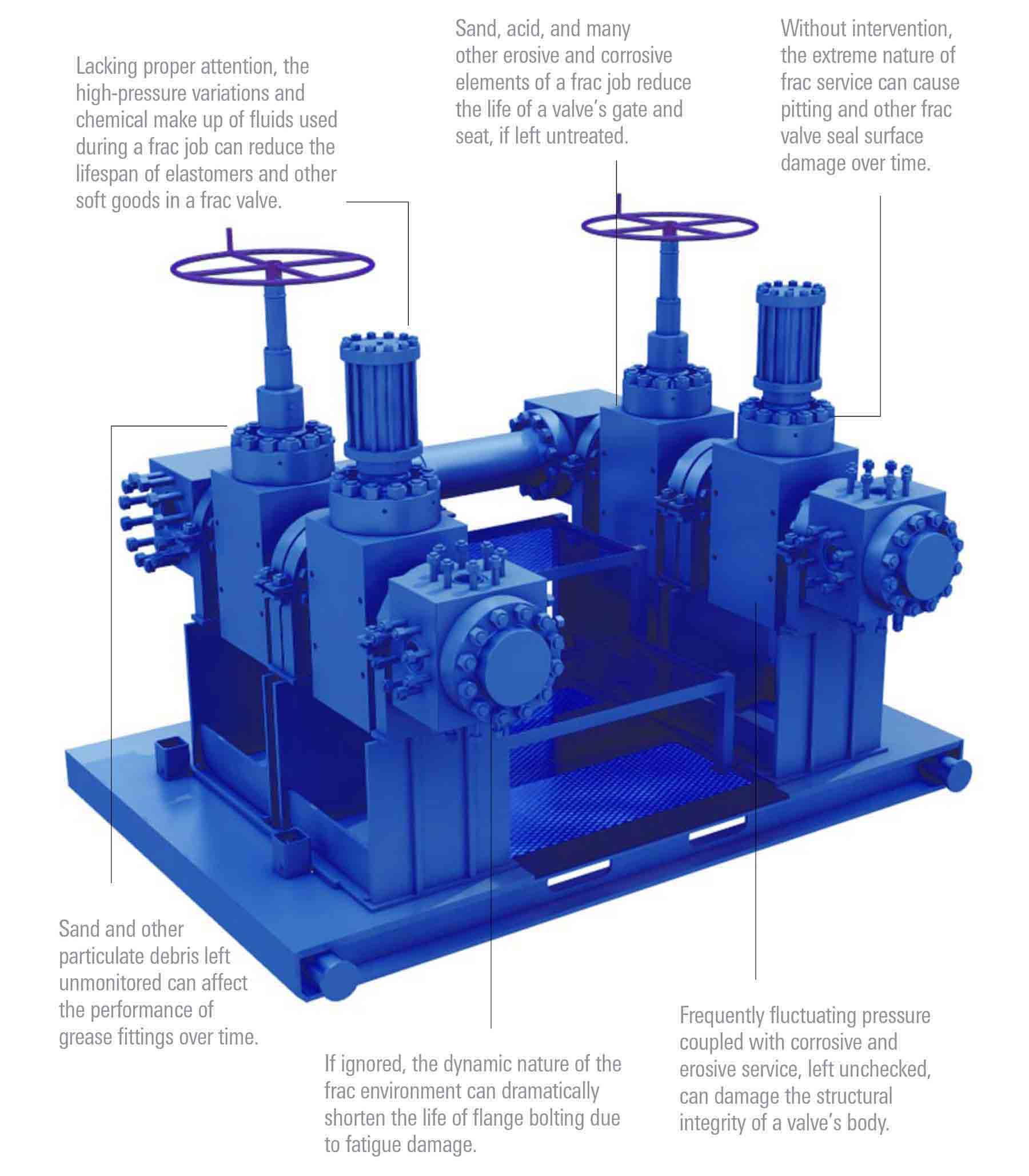Monoline
Flanged-connection fracturing fluid delivery technology
API 6A flanged connections provide reliable frac fluid delivery

A frac manifold is an arrangement of flow fittings and valves installed downstream of the fracturing pump output header and upstream of each frac tree being served. Modular and flexible Cameron frac manifolds can be assembled in many possible configurations. Each leg of the manifold can be aligned vertically, horizontally, or at any angle and will typically have one or two gate valves.
Time spent waiting while an isolation plug is set, perforating guns positioned and fired in the next zone, the wireline and gun carriers retrieved, and the lubricator isolated from the well contributes to costly underutilization of the fracturing crew and equipment. The Cameron frac manifold minimizes idle time for resources and enables their continuous use. Manifold outlets are preconnected to multiple frac tree goat heads and the manifold output is directed to alternating wells as isolation plugs are set and new fracturing zones are perforated.



Control of fluid flow to multiple wells eliminates the need for rig-up and rig-down between fracturing stages, enhancing effective use of fracturing resources and thus overall field economics. Fracturing operations can be conducted in one well while wireline services are being performed in another.
Using a single inlet or manifold significantly reduces the number of flowlines required, and together with the streamlined manifold design, reduces clutter at the well pad. Hydraulically actuated gate valves can be operated remotely, reducing personnel exposure to pressurized equipment.